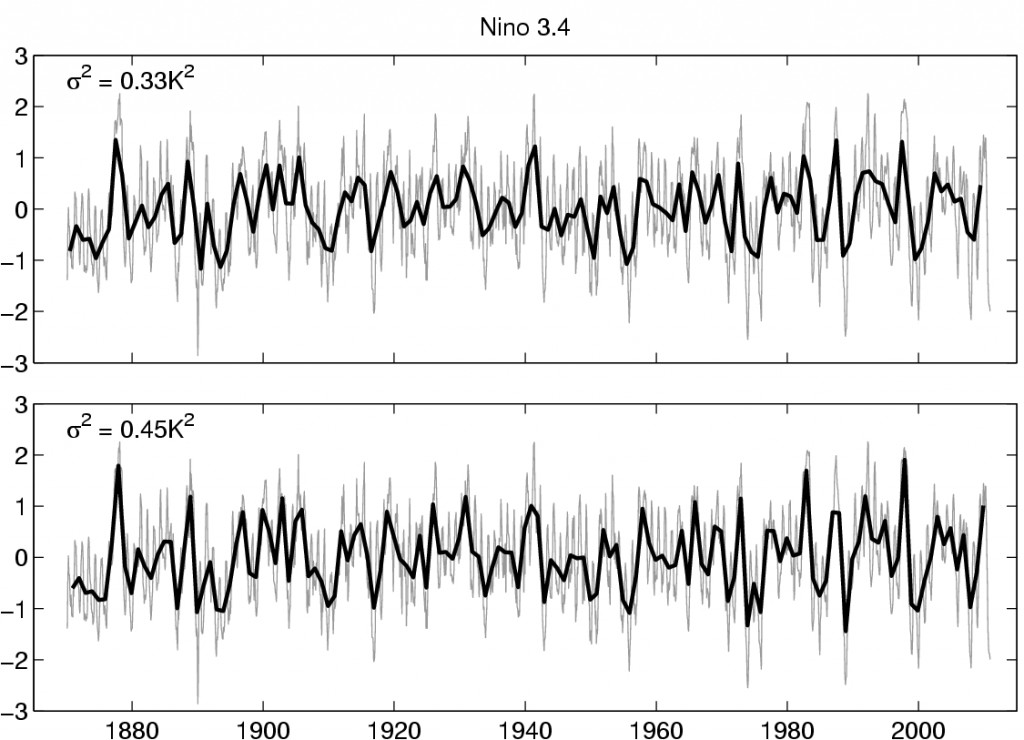A rather surprising question perhaps, but the answer is, ‘it depends’. There is no climatic reason to define a year from January to December, but that is what is generally done. But, is this the best definition?
What is ‘best’ probably depends on the purpose. For example, El Nino events tend to run roughly from May to May. An annual mean defined by Jan-Dec will not therefore capture the essence of the event, and will likely include cancelling anomalies. The figure below shows monthly Nino3.4 SSTs (from the HadISST dataset) in grey, and the annual means in black, using Jan-Dec (top) and June-May (bottom). Note the large difference in the variance of the annual means as labelled.
Why does the choice of definition matter? Some possible reasons include:
- Choosing appropriate metrics of inter-annual variability?
- Assessing predictability?
- For detection & attribution of recent climate trends?
For this last reason, the least variance definition may be best, so as to increase the signal-to-noise. For the other reasons the maximum variance may be ‘best’. It is also possible to see that it is not just SSTs which demonstrate such a different in variance depending on the annual definition – it can also be seen in temperatures over land (not shown).

Hi Ed, Nice question and useful to pose the question in the framework of whether you are interested in minimising or maximising the variance in annual values
I think it is quite common within climate models to use December to December, largely as a way to minimise the annual variance. As models go along they accumulate statistics for months, seasons, years and decades. From a European perspective the main interest is in the winter (December, January, February: DJF) and Summer (June, July, August: JJA) and we don’t want the effects of one particularly cold/warm winter to spread into the values for two adjoining years . Starting the year in December and therefore keeping the whole of one winter in one year is the way we do this.
But as you say, what is a year. We can always re-cut our cake in other ways. I guess you’d be more interested in JAS (July August September) if you lived in India (Wet season), Sahel (Wet season) or Amazonia (Dry season) and might want to think about a year in this context (and start the year at the beginning or end of the wet season to keep whole wet and dry seasons in one cycle (year)).
Thanks for the comment Ben!
I agree that different seasonal means make sense in different parts of the world (e.g. DJF in Europe). But, I think the same is true for annual means as well, e.g. for ENSO, analysing variability of a Dec-Nov mean does not really make sense to me. And, for predictability, the choice of ‘year’ might matter for assessing skill.
I guess part of the motivation was wondering about metrics for inter-annual variability – do the Met Office (or other groups) include variability in annual means in any of their model assessment metrics?
Funny, I was just doing the exact same analysis with El Nino, when I realized that my annually averaged data (Jan-Dec) does not seem to pick up the massive El Nino of 1997-1998. Thanks for this cite, I will keep reading it. Jen Catto, my colleague here at Monash brought it to my attention a few weeks ago. Good job!